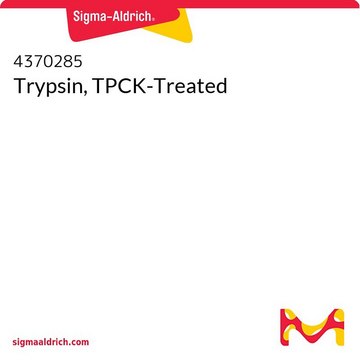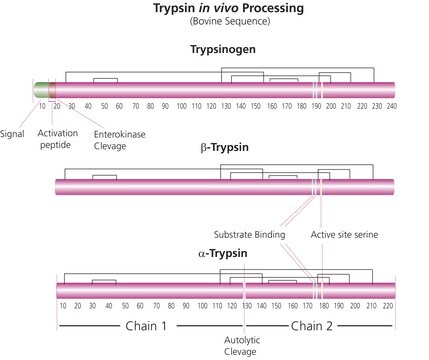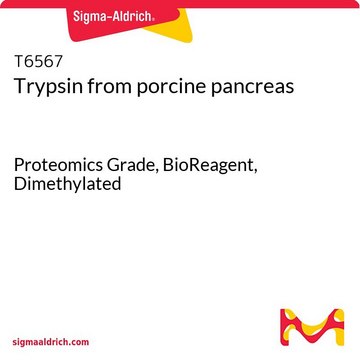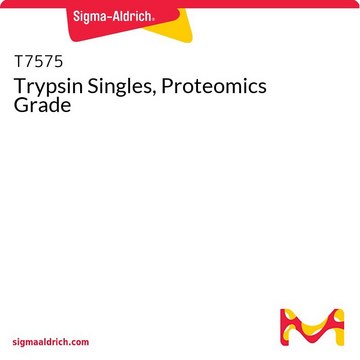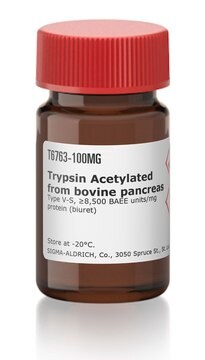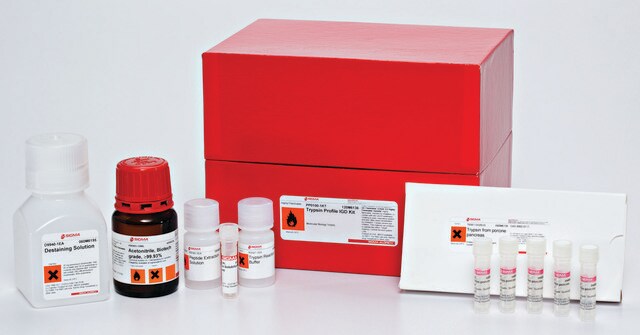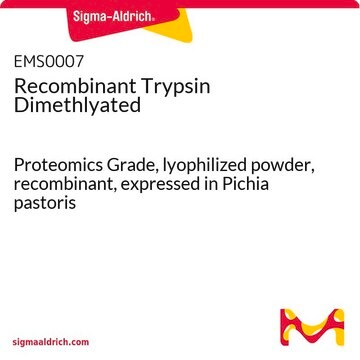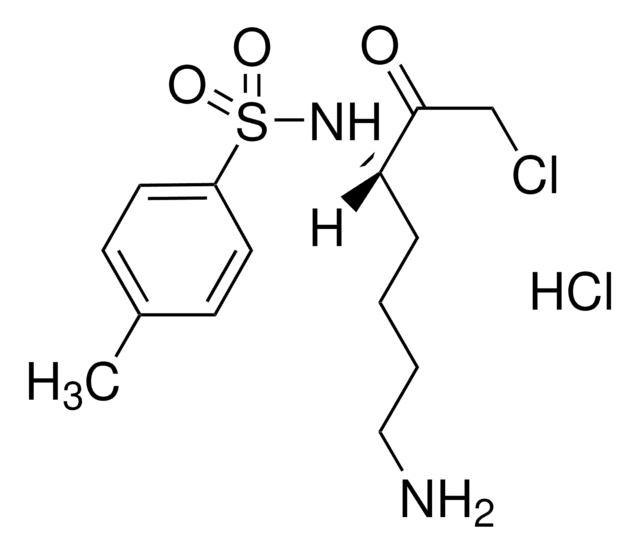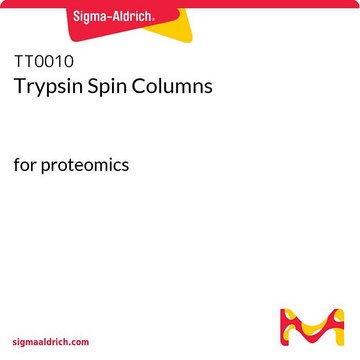4352157
Trypsin, TPCK-Treated
Synonym(s):
6- (1-tosylamido-2-phenyl) ethyl chloromethyl ketone treated Trypsin, Modified trypsin (TPCK-Treated), Trypsin, TPCK treated
Sign Into View Organizational & Contract Pricing
All Photos(1)
About This Item
UNSPSC Code:
12352204
NACRES:
NA.56
Recommended Products
shipped in
dry ice
storage temp.
−20°C
General description
Trypsin is a serine protease that specifically hydrolyzes peptide bonds at the carboxyl side of Lysine and Arginine residues. This modified trypsin has been treated with N-tosyl-L-phenylalanine chloromethyl ketone (TPCK) to inactivate extraneous chymotryptic activity. This trypsin product also contains calcium chloride, which may improve consistency in digestion. Each package contains 10 vials, with 25 μg in each vial.
Application
Trypsin, TPCK-Treated has been used for the digestion of protein samples to generate peptides for LC-MS (liquid chromatography–mass spectrometry)/MS analysis.
Trypsin, TPCK-Treated has been used in enzymatic treatment to cleave the recombinant native B-cell lymphoma-extra large (Bcl-xL)-ΔTM monomer to generate fibrils (the third type of Bcl-xL fibril, called “BclxLcf37”). It has also been used in influenza infection experiments as a supplement in infection/DMEM serum-free medium to infect A549 cells with influenza A H1N1 virus at a multiplicity of infection (MOI) to perform multi-round infection.
Signal Word
Danger
Hazard Statements
Precautionary Statements
Hazard Classifications
Eye Irrit. 2 - Resp. Sens. 1 - Skin Irrit. 2
Storage Class Code
10 - Combustible liquids
Flash Point(F)
Not applicable
Flash Point(C)
Not applicable
Choose from one of the most recent versions:
Certificates of Analysis (COA)
Lot/Batch Number
Sorry, we don't have COAs for this product available online at this time.
If you need assistance, please contact Customer Support.
Already Own This Product?
Find documentation for the products that you have recently purchased in the Document Library.
Customers Also Viewed
Quantitative milk proteomics--host responses to lipopolysaccharide-mediated inflammation of bovine mammary gland.
Danielsen M, et al.
Proteomics, 10, 2240-2249 (2010)
Pavel Bouchal et al.
Cell reports, 28(3), 832-843 (2019-07-18)
Accurate classification of breast tumors is vital for patient management decisions and enables more precise cancer treatment. Here, we present a quantitative proteotyping approach based on sequential windowed acquisition of all theoretical fragment ion spectra (SWATH) mass spectrometry and establish
Irene Pila-Castellanos et al.
PLoS pathogens, 17(2), e1009340-e1009340 (2021-02-18)
Influenza virus infections are major public health threats due to their high rates of morbidity and mortality. Upon influenza virus entry, host cells experience modifications of endomembranes, including those used for virus trafficking and replication. Here we report that influenza
Douglas E Vetter et al.
Methods in molecular biology (Clifton, N.J.), 493, 345-366 (2008-10-08)
Modern biologists have at their disposal a large array of techniques used to assess the existence and relative or absolute quantity of any molecule of interest in a sample. However, implementing most of these procedures can be a daunting task
Haruka Chino et al.
Molecular cell, 74(5), 909-921 (2019-04-23)
Certain proteins and organelles can be selectively degraded by autophagy. Typical substrates and receptors of selective autophagy have LC3-interacting regions (LIRs) that bind to autophagosomal LC3 and GABARAP family proteins. Here, we performed a differential interactome screen using wild-type LC3B
Our team of scientists has experience in all areas of research including Life Science, Material Science, Chemical Synthesis, Chromatography, Analytical and many others.
Contact Technical Service